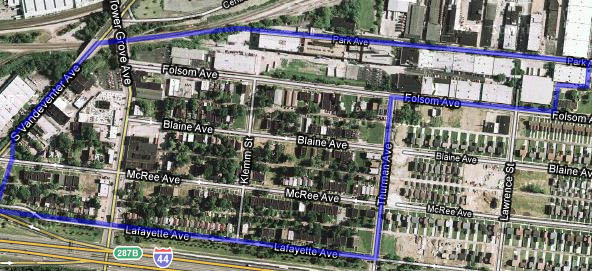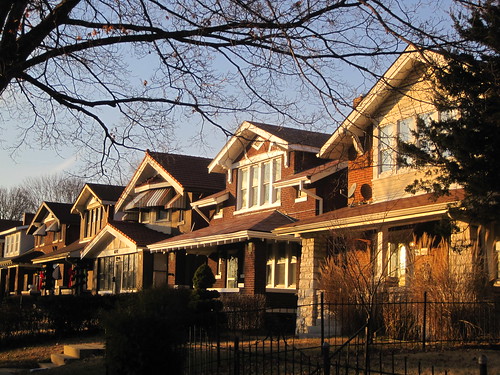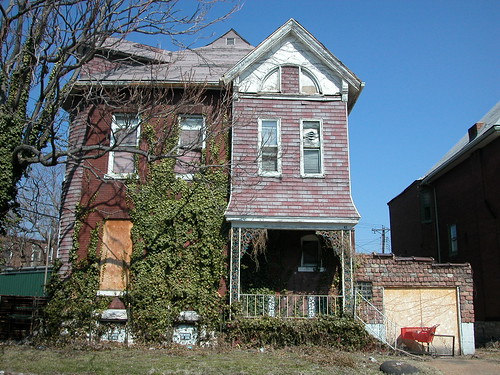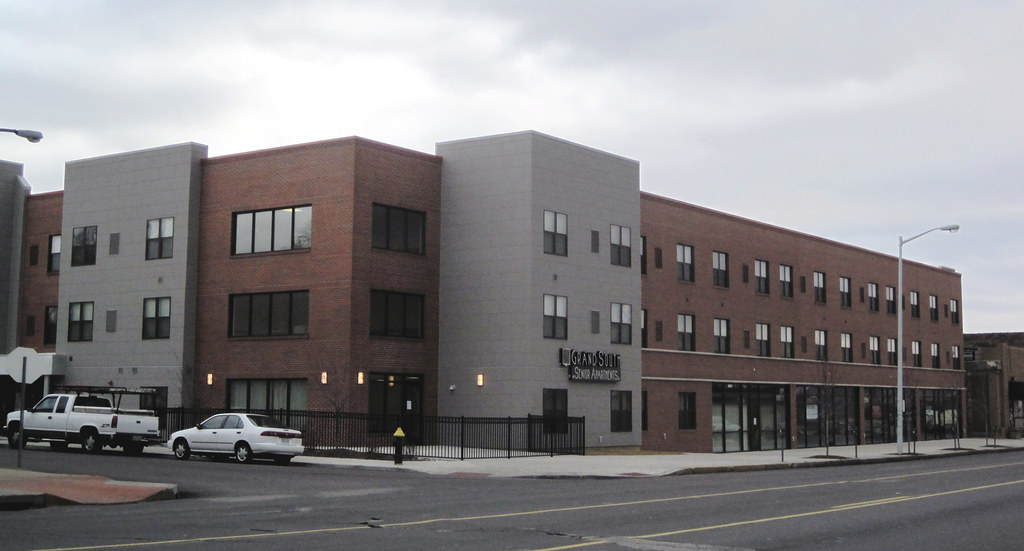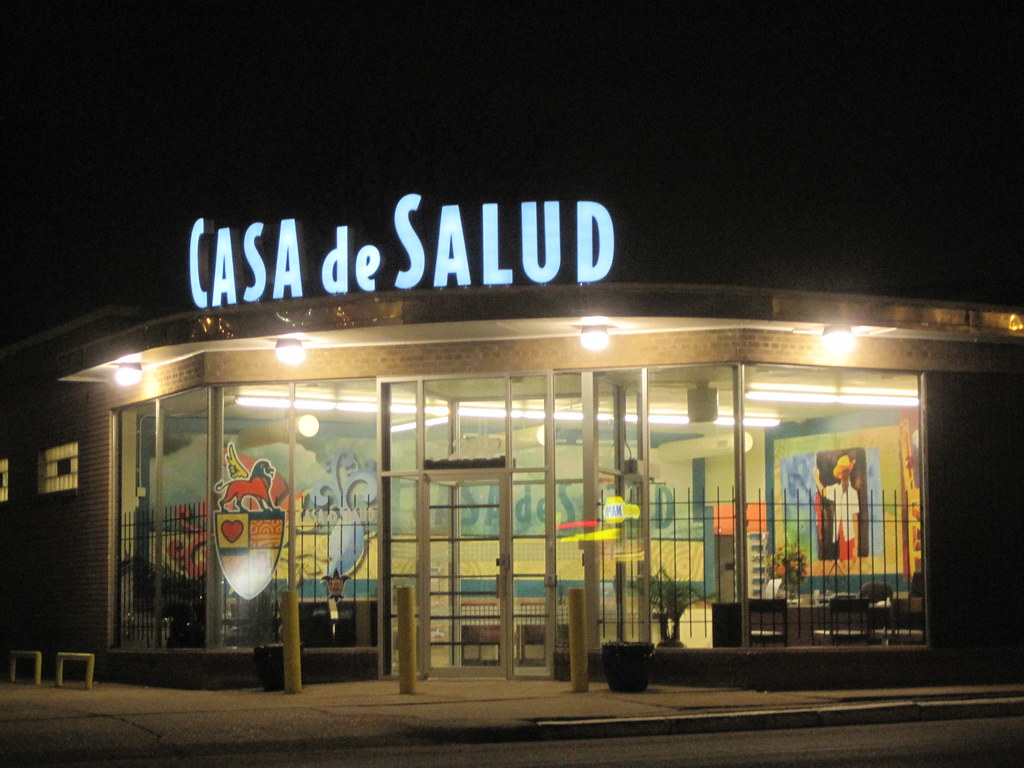by Michael R. Allen
 Last fall, chemical giant Sigma-Aldrich Corporation purchased the historic building housing The Brick bar located at 3548 S. Broadway in Marine Villa. The bar quickly shuttered and the building, built in 1887 by brick maker Paul Oehler, is now vacant. So far, Sigma-Aldrich has not announced plans for the building, although speculation of eventual demolition has begun. The Sigma-Aldrich plan sprawls on the southeast side of this stretch of South Broadway. In recent years, the company has wrecked many buildings on Broadway across from the Lemp Brewery complex.
Last fall, chemical giant Sigma-Aldrich Corporation purchased the historic building housing The Brick bar located at 3548 S. Broadway in Marine Villa. The bar quickly shuttered and the building, built in 1887 by brick maker Paul Oehler, is now vacant. So far, Sigma-Aldrich has not announced plans for the building, although speculation of eventual demolition has begun. The Sigma-Aldrich plan sprawls on the southeast side of this stretch of South Broadway. In recent years, the company has wrecked many buildings on Broadway across from the Lemp Brewery complex.
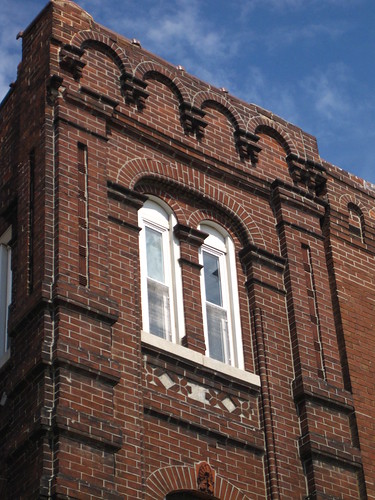 That the building is the work of a brick maker is no surprise. The masonry details of the corner building are unusual for a south city corner storefront. The strongly articulated piers, recessed planes, fine arches and what remains of the blind arcade on the top of the wall reward many viewings. The spandrels (areas under the windows) combine brick patterns and stucco in a manner that suggests later Arts and Crafts experimentation.
That the building is the work of a brick maker is no surprise. The masonry details of the corner building are unusual for a south city corner storefront. The strongly articulated piers, recessed planes, fine arches and what remains of the blind arcade on the top of the wall reward many viewings. The spandrels (areas under the windows) combine brick patterns and stucco in a manner that suggests later Arts and Crafts experimentation.
Oehler came to St. Louis from Germany in 1861, and quickly established one of south city’s largest brick manufacturing operations. His yard was locate don nearby President Street. Among the founders of the Concordia Turners, Oehler was prosperous. Oehler bought the corner lot in 1885, and by the end of 1887 had completed the substantial three-story building and adjacent one-story feed store.
 The cast iron storefront is impressive, with ornate columns and tapered headers. (The false doors and stained glass transoms in the openings are not original.)
The cast iron storefront is impressive, with ornate columns and tapered headers. (The false doors and stained glass transoms in the openings are not original.)
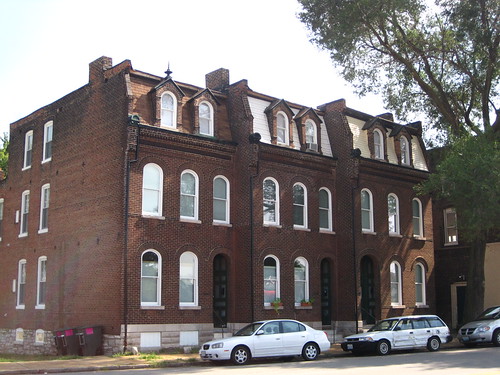 Oehler’s company did not make the transition from hand-made brick to hydraulic press production, and the business died with him. However, the family was quite well off from real estate investment alone. After Paul Oehler’s death in 1891, widow Franziska Oehler constructed the three residences at 3542-46 South Broadway in 1893.
Oehler’s company did not make the transition from hand-made brick to hydraulic press production, and the business died with him. However, the family was quite well off from real estate investment alone. After Paul Oehler’s death in 1891, widow Franziska Oehler constructed the three residences at 3542-46 South Broadway in 1893.
The row’s staggered fronts articulate the bend that Broadway makes here. These are typical Romanesque residential buildings for their time. Handsome Roman arches create the window and door openings, ornamental brick friezes and cornices mark the top of the second floor and modest mansard roofs form the third floor. One of the brick dormers retains an original metal finial. The foundation fronts are trimmed in cut limestone. While the mansards are covered by later materials, the row recently was renovated by developer Ben Simms. The units are rentals — nothing fancy, just good apartments with a lot of historic character.
The residences and the the corner building comprise the National Register of Historic Places listing for the Oehler Brick Buildings (8/1/2008), written by Andrew Weil and myself for Landmarks Association of St. Louis. The listing recognizes the unique origin of these buildings, which provide a strong anchor on a changing section of South Broadway. With the Lemp Brewery across the street, and the houses and storefronts of old Marine Villa surrounding Broadway, the solid forces of old industry and brick architecture are palpable here. Sigma-Aldrich can help keep it that way.
 In 2004, the building at 4301 McRee Avenue (at Tower Grove Avenue) was vacant. The terra cotta wrapped double entrance surround at the corner attract many an eye due to its ornate pediments. The pediments feature a mortar and pestle at center that commemorates the building’s original drug store tenant. Yet the rest of the building was rough, with all second floor windows missing. The Garden District Commission had acquired the building, and its future was unknown.
In 2004, the building at 4301 McRee Avenue (at Tower Grove Avenue) was vacant. The terra cotta wrapped double entrance surround at the corner attract many an eye due to its ornate pediments. The pediments feature a mortar and pestle at center that commemorates the building’s original drug store tenant. Yet the rest of the building was rough, with all second floor windows missing. The Garden District Commission had acquired the building, and its future was unknown. The unknown future arrived through architects Brent Crittenden and Sara Gibson, who purchased the building in 2006. In 2008, the building was rehabilitated as the home for Crittenden and Gibson’s enterprises, Urban Improvement Construction and the Central Design Office.
The unknown future arrived through architects Brent Crittenden and Sara Gibson, who purchased the building in 2006. In 2008, the building was rehabilitated as the home for Crittenden and Gibson’s enterprises, Urban Improvement Construction and the Central Design Office. Crittenden and Gibson have a vision for a reborn Tower Grove Avenue in McRee Town, and the corner pharmacy is not their only finished project. When neighborhood anchor Tower Grove Hardware closed — and this writer was among those who did mourn the passing — the duo purchased the two-story store building at 1624 Tower Grove Avenue across the street from their offices. Rehabilitation was complete by the end of summer 2009. The large storefront openings now are inviting with large windows, after having been covered in boards for decades. Both this building and the corner building at 4301 McRee Avenue are now contributing resources to the Liggett and Myers Historic District.
Crittenden and Gibson have a vision for a reborn Tower Grove Avenue in McRee Town, and the corner pharmacy is not their only finished project. When neighborhood anchor Tower Grove Hardware closed — and this writer was among those who did mourn the passing — the duo purchased the two-story store building at 1624 Tower Grove Avenue across the street from their offices. Rehabilitation was complete by the end of summer 2009. The large storefront openings now are inviting with large windows, after having been covered in boards for decades. Both this building and the corner building at 4301 McRee Avenue are now contributing resources to the Liggett and Myers Historic District.
